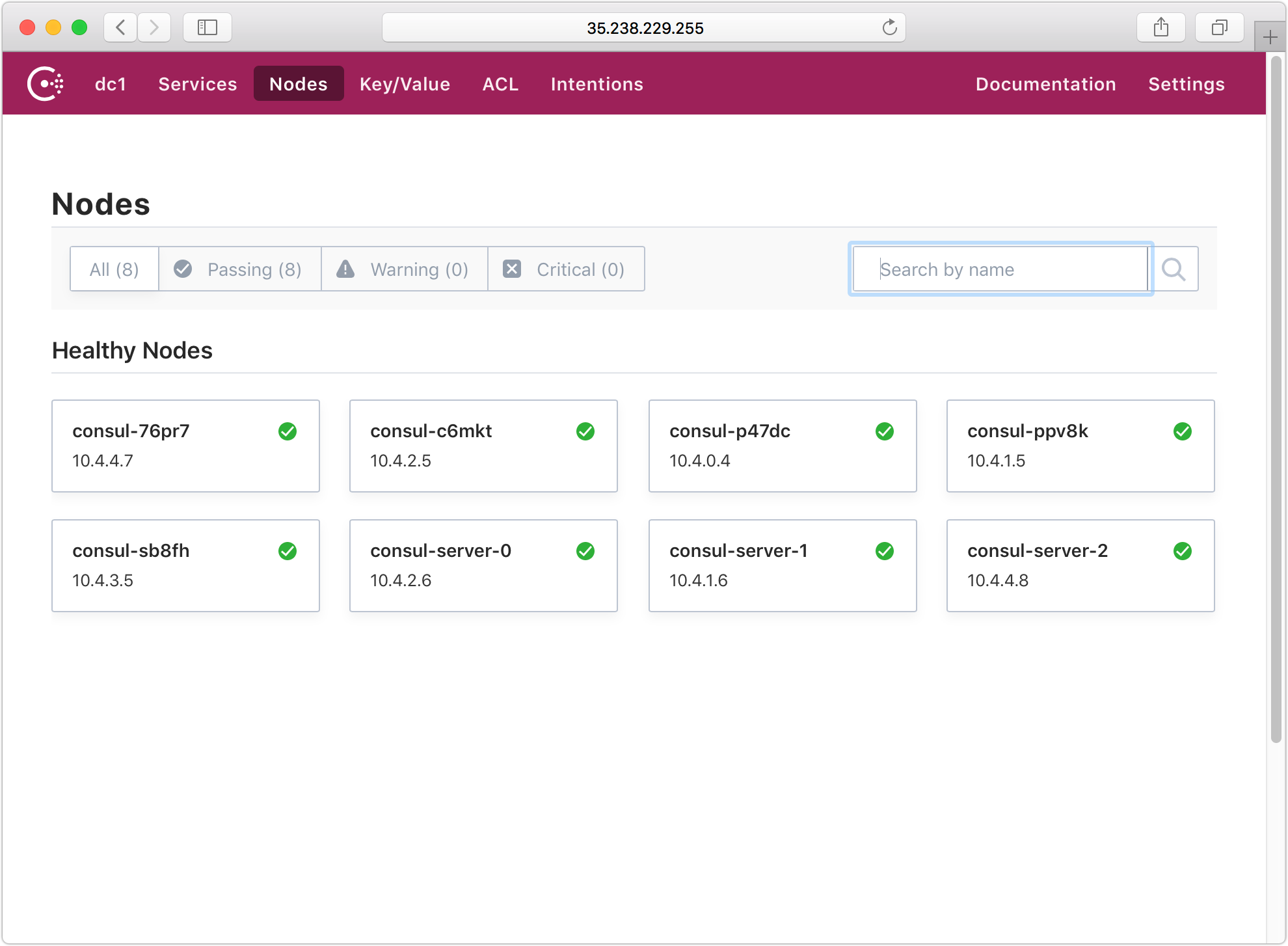Announcing the HashiCorp Consul Helm Chart
We're releasing HashiCorp Consul + Kubernetes features every week. This week we're releasing the official Consul Helm Chart for running and configuring Consul on Kubernetes.
Using the Helm chart, you can start a complete Consul cluster on Kubernetes in minutes. The Helm chart can setup and configure a Consul server cluster, client agents, or both. The Helm chart will also be the primary mechanism for setting up future Consul and Kubernetes features.
»Video
To learn more about the Consul Helm chart, watch the video below or scroll down to read more. The video below shows the Helm chart being used to install, reconfigure, and upgrade Consul.
»Running a Consul Cluster
The Helm chart can be used to setup Consul on Kubernetes in minutes.
The chart is currently available via the hashicorp/consul-helm GitHub repository. We plan on supporting official Helm repositories in the future. For now you must download or clone this repository to get started. After downloading the repository, please check out a tagged release:
$ git clone https://github.com/hashicorp/consul-helm.git
$ cd consul-helm/
$ git checkout v0.1.0
Then, install the chart:
$ helm install .
...
In a few minutes, you'll have a three node server cluster deployed, bootstrapped, and joined with a Consul agent running on every Kubernetes node. Once the pods are up and ready, you can view the Consul UI by forwarding port 8500 from a server pod and opening your browser to http://localhost:8500/.
$ kubectl port-forward consul-server-0 8500:8500
...
The Helm chart is highly configurable. You can use the configuration to disable components, change the image used, expose the UI service, configure resource requirements, storage classes, and much much more. See the full reference documentation of available chart configuration options for more information.
For Consul Enterprise users, a custom image can be configured with the Helm chart. HashiCorp does not currently publish official Docker images for Consul Enterprise. We plan to do this, but in the mean time if you create custom Docker images in private repositories, you can configure the Helm chart to use those images.
»Running a Client-Only Cluster
In addition to deploying a full server cluster, the Helm chart can be used to deploy a client-only cluster. This is a common deployment pattern where the Consul servers are run outside of the Kubernetes cluster. The example configuration below enables this deployment model:
global:
enabled: false
client:
enabled: true
join:
- "provider=aws tag_key=... tag_value=..."
This configuration disables all Helm chart components by default, then explicitly enables only clients. The join configuration then uses cloud auto-join to discover and join pre-existing Consul server agents.
The Helm chart supports dozens of configuration options. See the full reference documentation of available chart configuration options for more information.
»Next
The Consul Helm chart provides a single package for installing, configuring, and upgrading Consul on Kubernetes, as well as future Consul + Kubernetes components. The Helm chart is available now on GitHub. To learn more, see the Helm Chart documentation or the documentation on Running Consul on Kubernetes.
We have more exciting Consul + Kubernetes integrations being released in the coming weeks. Please read the Consul and Kubernetes announcement blog post to learn more.
Sign up for the latest HashiCorp news
More blog posts like this one

A blueprint for cloud success with HashiCorp at Google Cloud Next
A recap of HashiCorp infrastructure and security news and developments from Google Cloud Next, from scaling infrastructure as code to fighting secrets sprawl and more.

Seamlessly migrate from Consul service discovery to service mesh
Try this example method for transitioning from Consul service discovery to service mesh without affecting uptimes or development teams.

Consul 1.18 GA improves enterprise reliability with Long-Term Support
Consul 1.18 improves enterprise reliability with Long-Term Support, fault-injection capabilities, and expanded Amazon ECS support for multi-runtime deployments.
